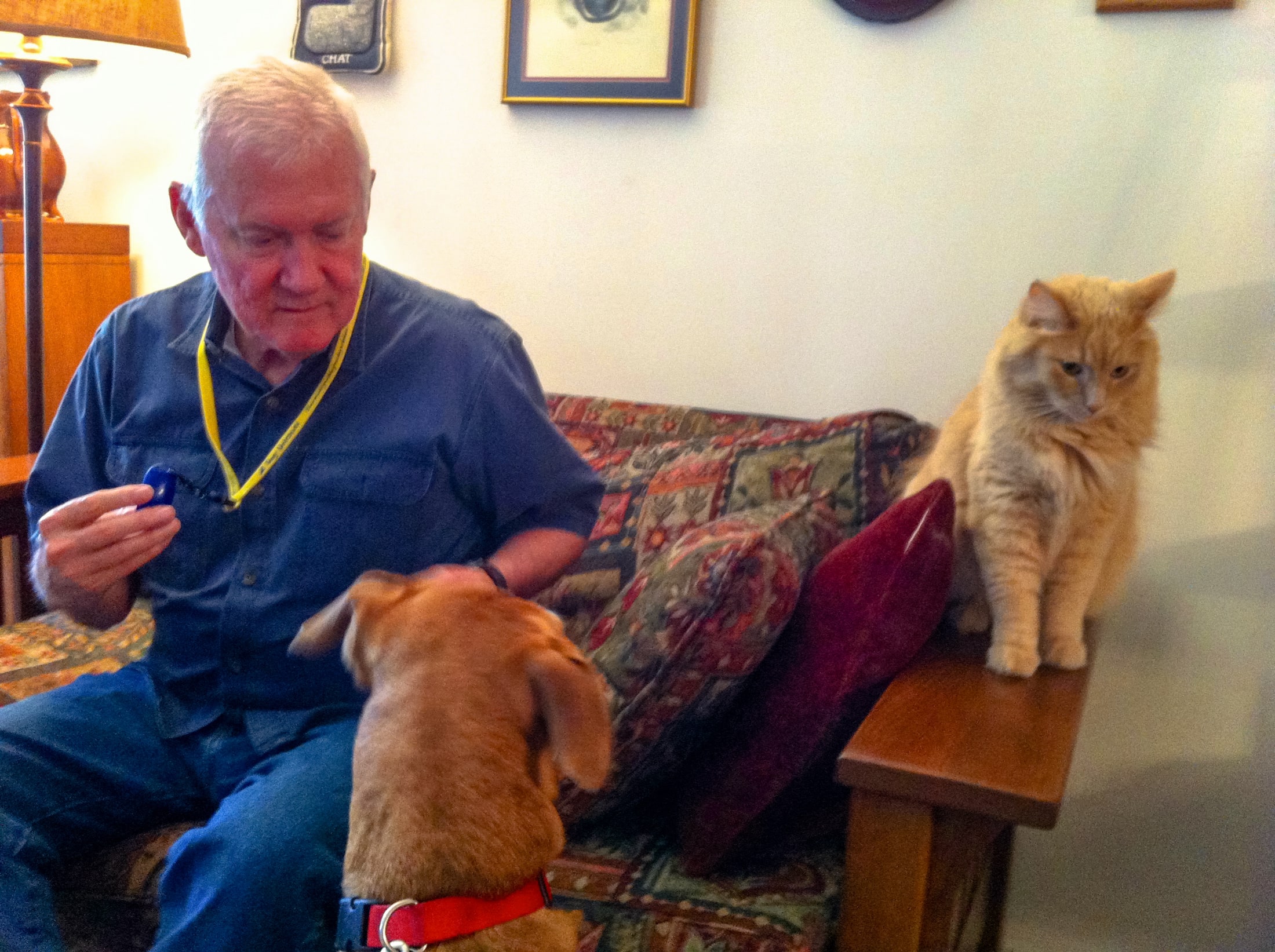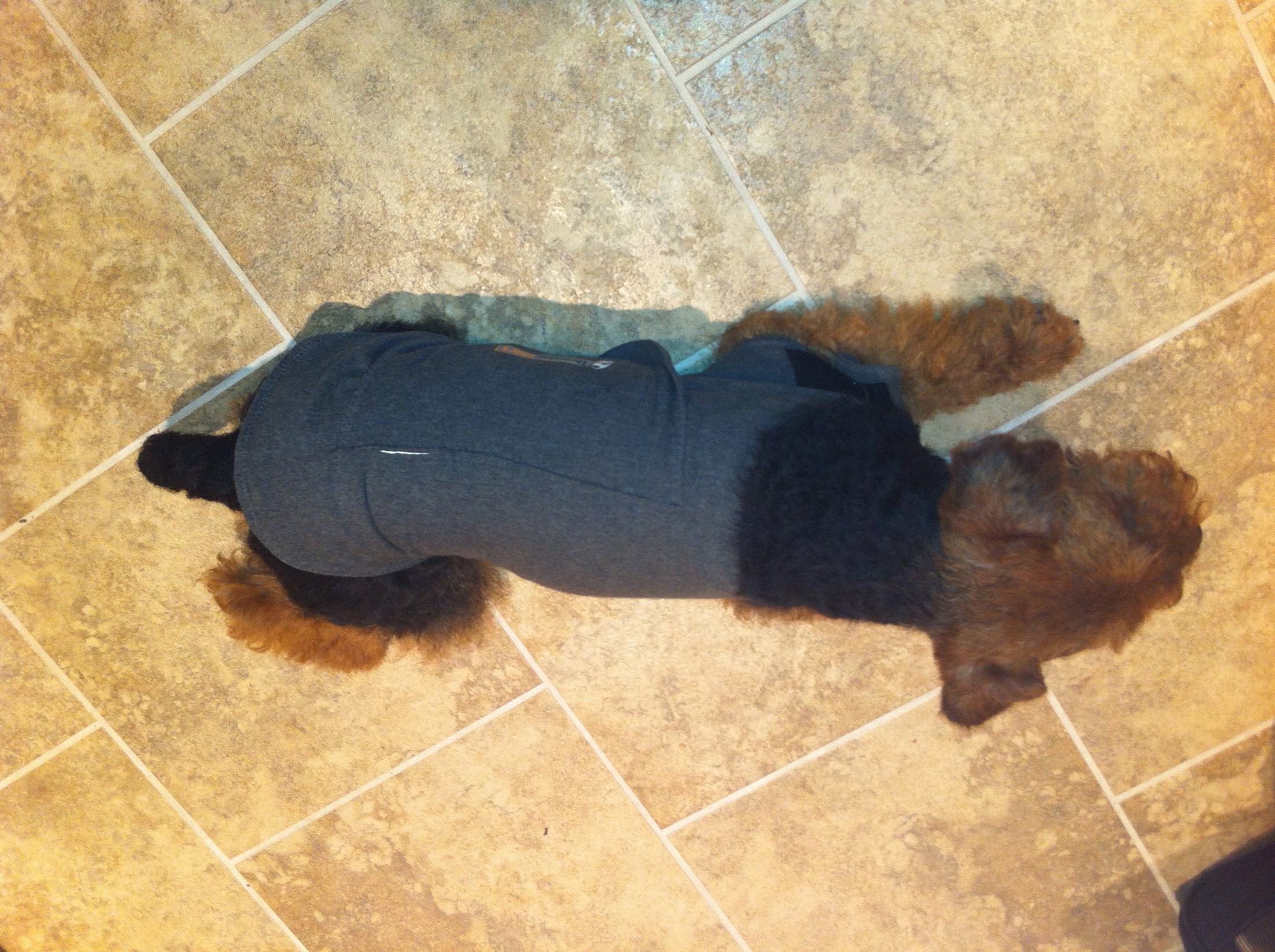The Training Process
To promote early bonding with your new dog:
- Make sure your dog is physically comfortable
- Get to know your dog – observe it carefully and learn to predict its behavior under a variety of circumstances
- Caution: If your dog ever tries to or succeeds in biting a person or another dog have your dog assessed by a professional. Use a muzzle to prevent further bites and do not rely on advice from this or any other web site.
- Limit the choices available to your dog
- Reward your dog when it makes choices you like
- Make your dog behaviorally comfortable
- Create new associations if it is fearful
- Teach it to offer behavior if it needs to gain confidence
- Teach it to offer other behaviors if it is rude
- Work on 2-way communication
- Listen carefully
- Begin clicker training
- First use Management: to prevent unwanted behavior and avoid the temptation to punish
Then begin Training: develop new habits through effective communication
Management Ideas
Start by setting up the environment to prevent unwanted behavior. This may include rooms in your house, equipment for the house, equipment to attach to the dog, and advice for family and friends who will interact with the dog. Once the dog behaves in an undesirable way, the behavior has been practiced and we are stuck having to make a decision about what to do. When we find ourselves having to respond to the dog, the dog has trained us. In an effort to get out of that situation it can be tempting to use punishment. We want to avoid using punishment. See this position statement from the American Veterinary Society for Animal Behavior: https://avsab.org/wp-content/uploads/2019/01/Punishment-Position-Statement_bleeds-10-2018-updated.pdf.
Training Ideas
Do you really have to become a trainer? What are you getting into?
Yes! Just as when you have a child you must become a parent, when you get a dog, you must become a dog trainer.
Some of the best resources for training can be found at: https://www.clickertraining.com.
Clicker training is a skill that can be learned quite easily, even by children. The basic science is simple and, when applied correctly, works as an effective form of communication for training. As with many skills it can be continually refined and improved. The application of the science becomes an art that can be tweaked indefinitely like music or painting or dance or baseball.
What do we mean by Positive Reinforcement? Reinforcement is an event that happens after a behavior occurs that gives the behavior significance. If what happens is something the dog wants again, it counts as positive. (If the event is something the dogs wants to avoid it is negative.)
When a dog discovers that a certain behavior consistently results in something desirable the dog will repeat it more and more often. We can plan training to take advantage of this. We decide what behavior we want to see more often, and we make sure it results in something the dog likes. To make sure the dog understands which exact behavior is leading to the reinforcement we make it clear by marking it at the time it is occurring. In clicker training we sound the clicker just as the behavior is happening. (Other types of markers may be used.)
Example: Let’s say you ask your dog to sit, but it pops up right away after sitting. By using the clicker to mark the sit and quickly delivering the treat while the dog is still sitting, we can make it clear to the dog that the sit is what is being rewarded. As the dog realizes what is happening it will choose to remain sitting rather than popping up. The click makes it clear to the dog which behavior is paying off.
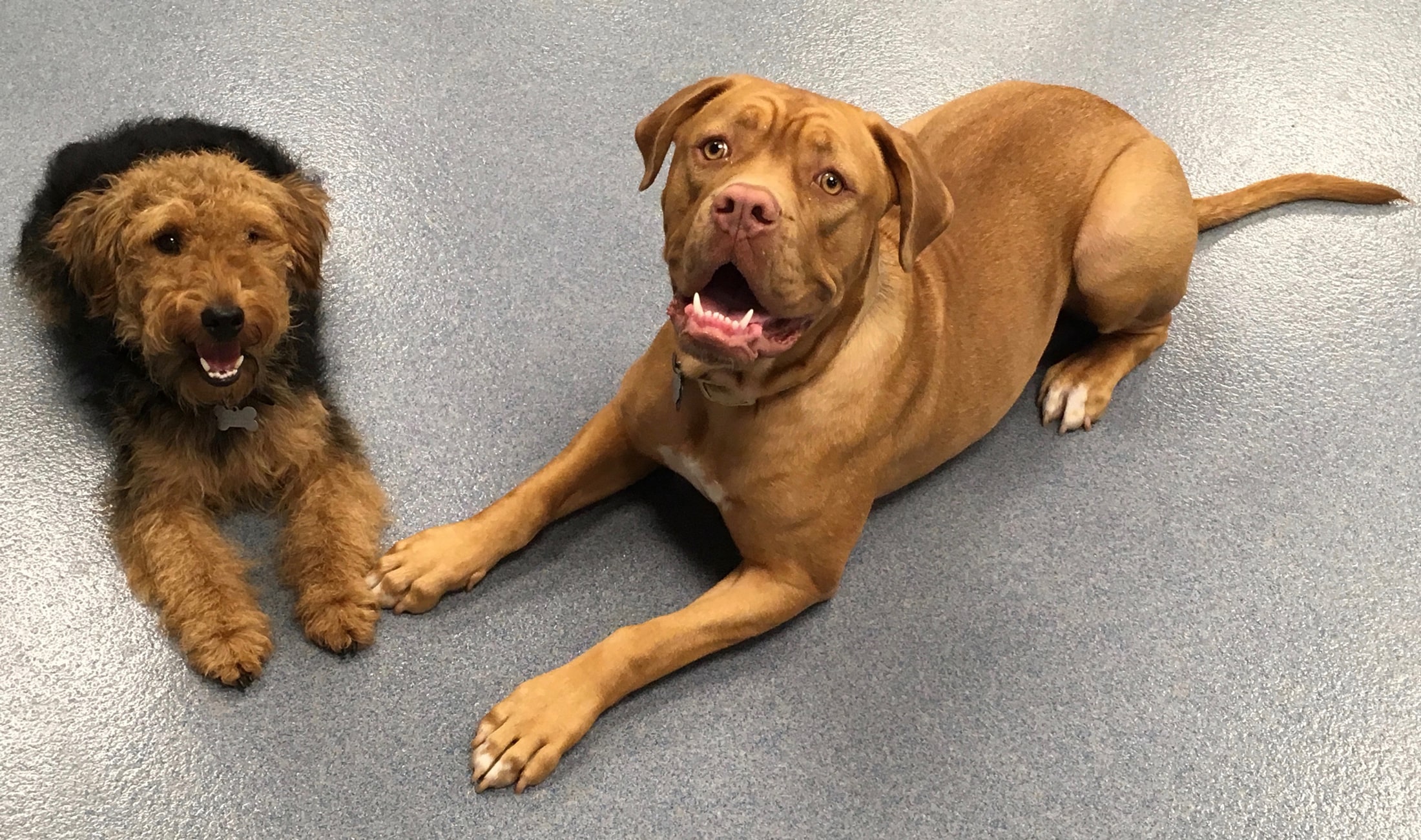
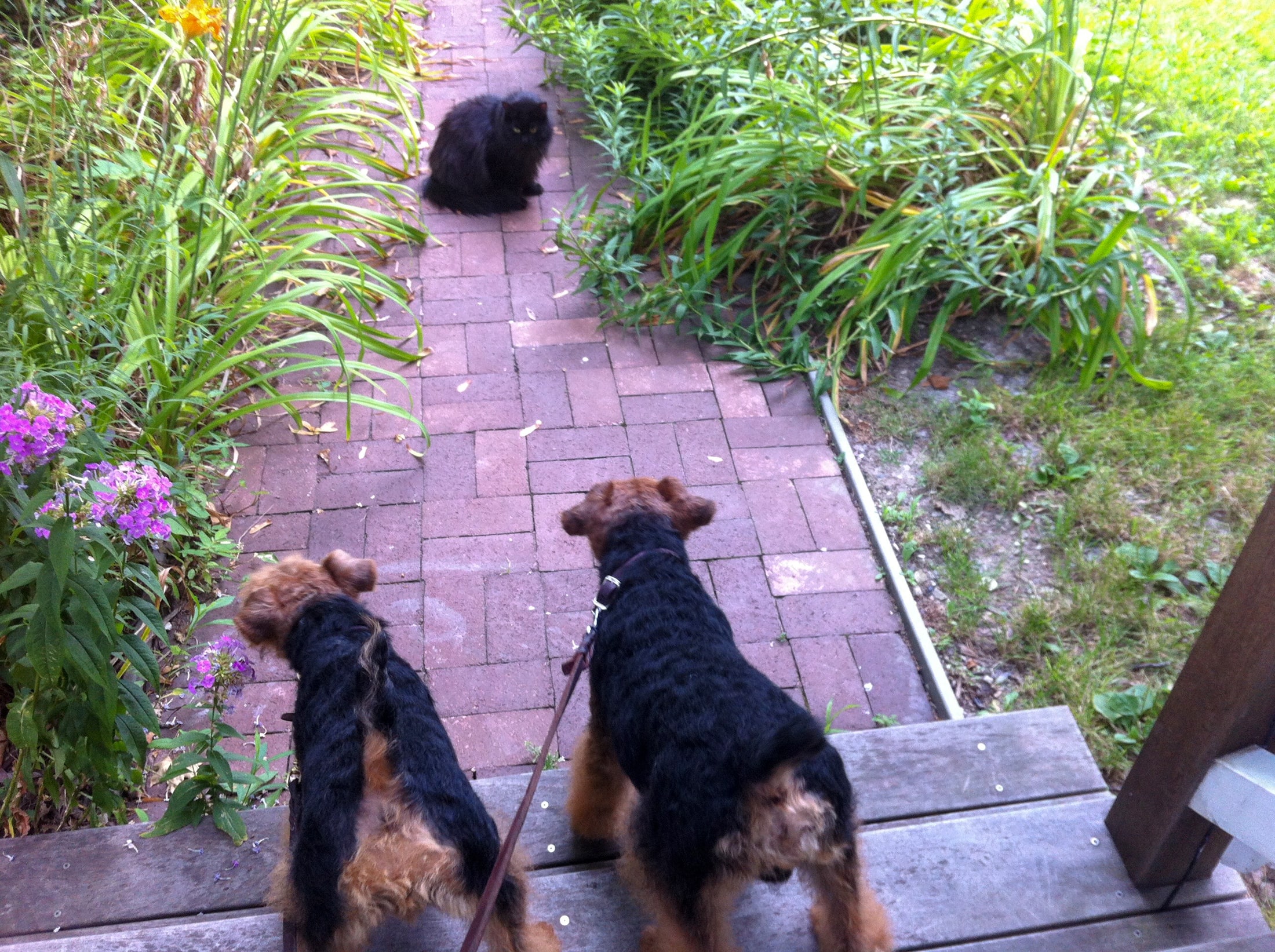
Baby or pet gates #
Gates are used to keep the dogs in puppy-proofed rooms and keep them out of those that are not yet safe.
Select metal or plastic until you know your dog will not chew on wood.
Select sturdy enough and high enough for your dog and install with care because if the dog gets through it once, it has learned it can and will continue to challenge barriers
Pens #
Pens are used to provide a puppy proofed space when a whole room is not available. They can be set up for long term situations by provided a location in the pen, such as papers or a litter pan, for the dog to use to eliminate.
Select metal or plastic because many dogs chew on wood.
Select sturdy enough and high enough for your dog because if the dog gets out once, it has learned it can and will continue to challenge barriers.
Keep anything the dog can climb on near the center of the pen so the pup cannot use it to climb over the edge of the pen.
Crates #
Crates are used for short-term confinement (dog must be allowed out before the next time it needs to eliminate). Except for giant breeds, they can be used in various rooms, in the car, in hotel rooms and outdoors in good weather.
A well-sized crate should allow the dog to stand up completely, turn around easily, and lie down flat on its side. Select a crate to fit the size that you pup is now because one that is too large allows the pup room to sleep at one end and pee at the other.
Keep the crate free of bedding until you are certain that the dog will not pee in the crate or chew on the bedding.
Tethers #
Tethers are essentially leashes that are anchored to something to prevent the dog from having free access to too many opportunities. It may be a leash tied to your waist with you as the anchor, or a specially designed tether attached a wall or other sturdy object. The tether is intended for short-term use under supervision.
[add photo]
I use a plastic coated steel cable with a hook on each end. One end attaches to the dog’s flat buckle collar and the other to a sturdy eye-bolt in a baseboard. The dog can be tethered in any rom that has an eye-bolt, is easier to move than a crate and takes up less space. These tethers can be ordered in a variety of lengths from www.pettethers.com.
Collars #
Choose a flat or rolled collar that cannot slip off over you dog’s ears because if the dog can slip out, the collar will not keep the dog safe. Avoid collars that tighten completely around the neck or have any type of prongs or shocks that may be aversive. The collar must always be benign from the dog’s point of view or it will create anxiety that will interfere with learning.
My personal preference is a rolled leather buckle collar.
Leashes #
Choose a leash that:
- is strong enough to restrain your dog.
- has a sturdy, easy to use snap.
- is comfortable in your hands.
- remains at a consistent length.
- your dog does not chew
My personal preference for a growing puppy is a four-foot nylon leash.
My personal preference for an adult, well-mannered dog is a six-foot leather leash.
Harnesses #
Choose a harness that allows you to attach the leash at the front to the dog’s chest, under its neck because this gives you a mechanical advantage and prevents the dog from pulling hard on the leash.
Note: For the harness to function properly it must be carefully and snugly fit according to the directions.
Head halters #
These are helpful in some cases, but I recommend them rarely now that there are so many options in harnesses, because it often takes less time for a dog to adjust to wearing a harness.
Note: For the halter to function properly it must be carefully and snugly fit according to the directions.
Seat belts #
I recommend that dogs are secured when riding in a car for everyone’s safety. I use crates in the car to restrain my dogs, but if you cannot do so, please get a seat belt for your dog.
Muzzles #
Teach your dog to wear a muzzle to prepare for the unexpected. If your dog did not learn bite inhibition before it was 12 weeks old there is a much greater chance that it will bite too hard at some time. Wearing a muzzle can help you feel secure that nothing terrible can happen. Although my dogs are well-behaved and cooperative at the veterinary office, I muzzle them sometimes for two reasons: 1) to practice the process and 2) because the staff faces dangerous dogs regularly so they are always on guard and they relax more when a dog is muzzled already.
Select a sturdy basket type, such as a Baskerville brand muzzle.
To begin, show the muzzle, give a treat, and hide the muzzle again. Repeat several times, until the pup looks forward to seeing the muzzle. As the dog begins to approach the muzzle, begin giving the treat through the front of the muzzle so that the dog reaches into it to get the treat. Next, hold the muzzle out and wait for the dog to put its snout in the muzzle, click and treat through the front of the muzzle. As the dog becomes comfortable with this, buckle and unbuckle the muzzle several times, always giving a treat for both the buckle and unbuckle. Practice until it is routine for the dog to be muzzled.

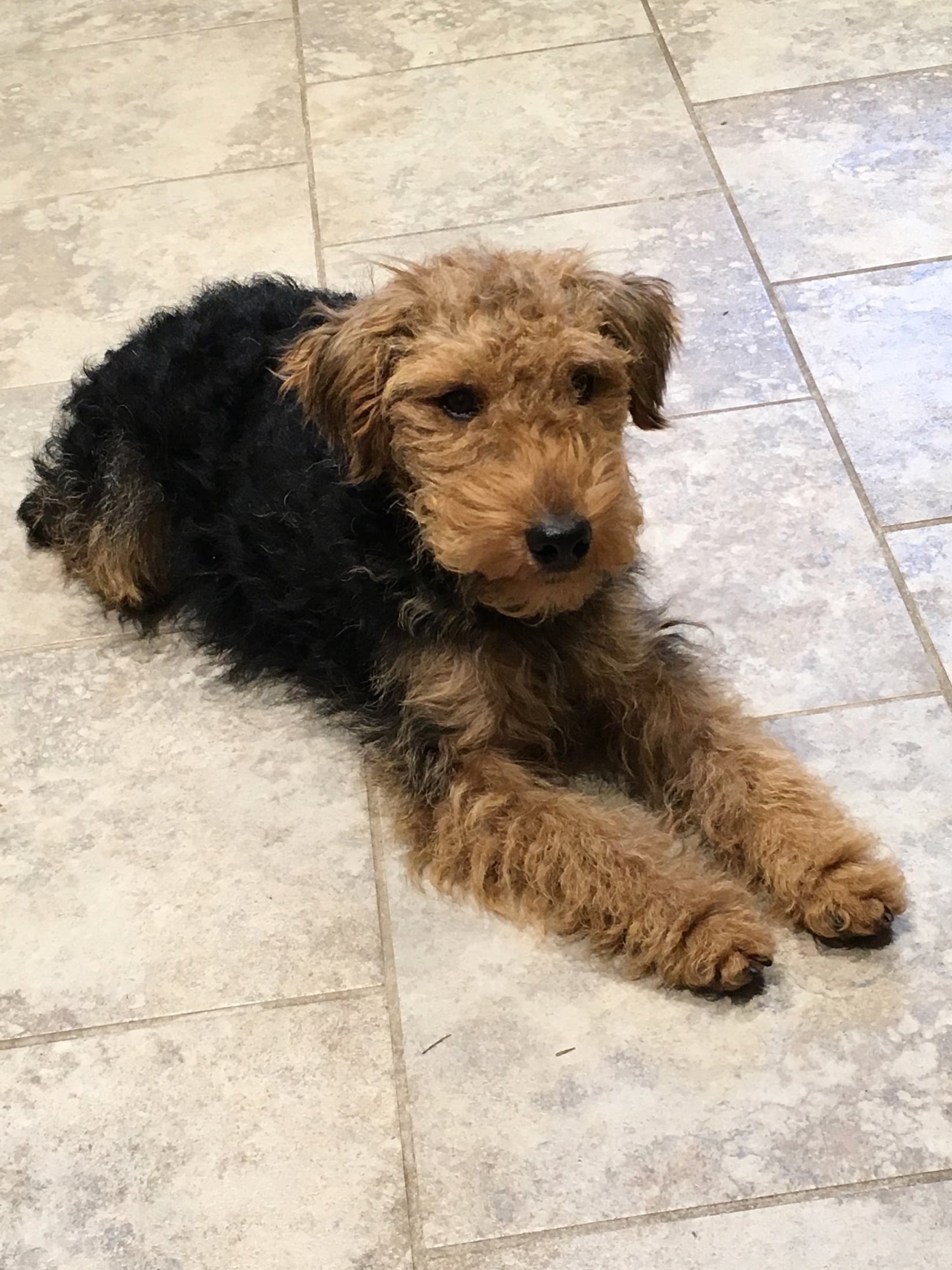
Advice for people links:
Help them understand….. #
Know what you want your dog to know and be able to do. Share your vision with those close to you, especially those who interact with your dog.
Have a plan for how to teach your dog what you want it to know and be able to do. Be realistic, considering your dog’s life experiences to date. Ask for assistance from Come Click!®LLC
Be aware of how every interaction with you and others is a learning experience for the dog.
Are there people in the dog’s life who are serving as un-trainers, rather than supporting your efforts?
Can you help these people understand how you need them to interact with the dog?
Can you find ways that some people can avoid interaction so they do not have an unwanted influence on the dog’s behavior?
Do your part….. #
Keep your dog away from people who even inadvertently throw your dog into an emotional state. When that is not possible, be with your dog to help it conquer its emotions.
When strangers approach too fast, step between the person and your dog, protecting your dog by preventing the person from getting close enough for contact.
Caution: If your dog ever tries to or succeeds in biting a person or another dog have your dog assessed by a professional. Use a muzzle to prevent further bites and do not rely on advice from this or any other web site.
It is often apparent that shy or reticent dogs need this protection, but protect your wild, over-friendly dog, too. Often the super active dog is acting from uncertainty and needs reassurance also. See more.
